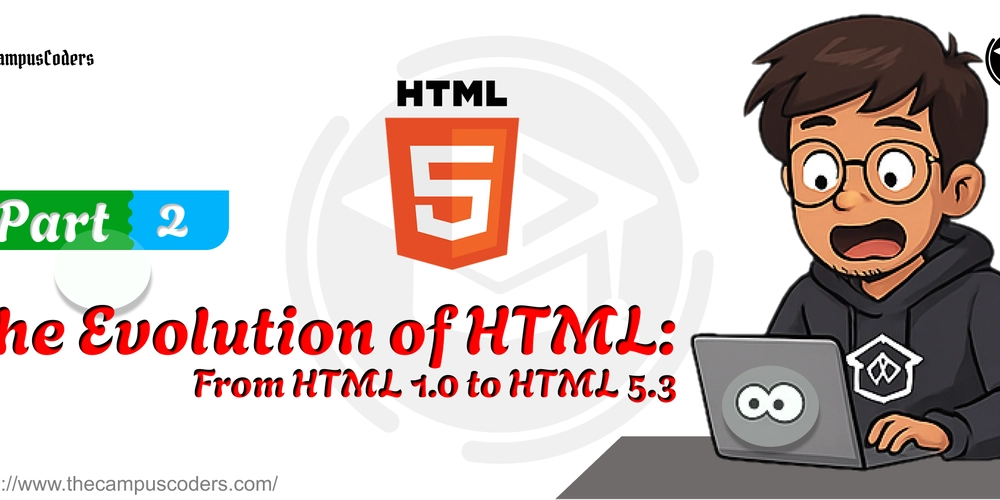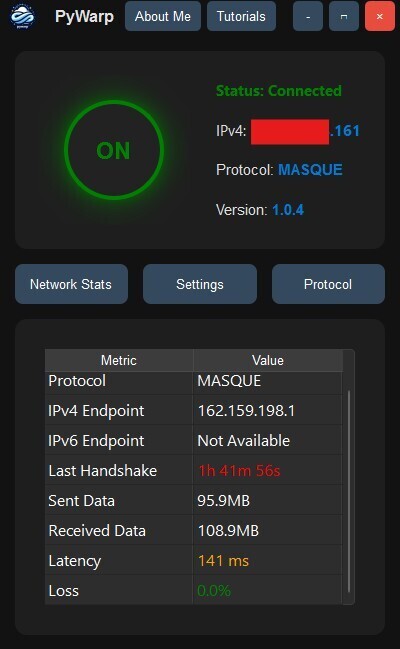The Evolution of HTML: From HTML 1.0 to HTML 5.3
Introduction HTML has not always been what it is today. What started as a simple language to link documents has evolved into a powerful tool capable of building rich, interactive, and accessible web applications. Understanding how HTML evolved over time gives real perspective on why certain tags exist, how modern practices came to be, and why standards matter today more than ever. In this article, we explore HTML's journey — from its humble beginnings to its current sophisticated version: HTML5.3. Early Beginnings: HTML 1.0 (1991) Aspect Details Released by Tim Berners-Lee at CERN Purpose To allow sharing scientific documents via hyperlinks Key Features Basic support for text, hyperlinks, and simple document formatting Limitation No styling, no multimedia, no scripting Realistic Touch: At this stage, web pages looked like simple text documents with blue underlined links. No images, no background colors, no layout control — just pure content and navigation. Example HTML 1.0 Snippet: Simple Page My First Web Page Welcome to my very basic HTML document. Visit Example HTML 2.0 (1995) Aspect Details Standardized by Internet Engineering Task Force (IETF) Purpose To formalize the existing features and add basic forms New Additions Forms (, , , ) for user interactions Limitation Still very limited in structure, no advanced layouts or dynamic behavior Impact: HTML 2.0 introduced user interaction for the first time, enabling the birth of online forms like login pages, contact forms, and simple surveys. HTML 3.2 (1997) Aspect Details Standardized by W3C (World Wide Web Consortium) Major Features Tables, Scripting Support ( tag), Text Flow Elements Browser Wars Netscape and Internet Explorer heavily influenced feature adoption Realistic Touch: The addition of tables revolutionized page layout at the time. Developers began using HTML tables not only for data but also for designing entire web page structures. HTML 4.01 (1999) Aspect Details Versions Three flavors: Strict, Transitional, and Frameset Major Improvements Separation of structure (HTML) and presentation (CSS encouraged) Accessibility Focus on making websites accessible to all users, including those with disabilities Key Concepts Introduced: Use of id and class attributes to target elements via CSS. Greater encouragement towards using external stylesheets rather than inline styling. Formation of semantic structure awareness, although not yet fully realized. Realistic Touch: Web development around this time started shifting towards design-oriented thinking. Websites no longer needed to look like scientific journals — brands started demanding visually attractive designs.

Introduction
HTML has not always been what it is today.
What started as a simple language to link documents has evolved into a powerful tool capable of building rich, interactive, and accessible web applications.
Understanding how HTML evolved over time gives real perspective on why certain tags exist, how modern practices came to be, and why standards matter today more than ever.
In this article, we explore HTML's journey — from its humble beginnings to its current sophisticated version: HTML5.3.
Early Beginnings: HTML 1.0 (1991)
| Aspect | Details |
|---|---|
| Released by | Tim Berners-Lee at CERN |
| Purpose | To allow sharing scientific documents via hyperlinks |
| Key Features | Basic support for text, hyperlinks, and simple document formatting |
| Limitation | No styling, no multimedia, no scripting |
Realistic Touch:
At this stage, web pages looked like simple text documents with blue underlined links.
No images, no background colors, no layout control — just pure content and navigation.
Example HTML 1.0 Snippet:
</span>Simple Page<span class="nt">
My First Web Page
Welcome to my very basic HTML document.
href="https://example.com">Visit Example



































































![Apple Watch Series 10 Back On Sale for $299! [Lowest Price Ever]](https://www.iclarified.com/images/news/96657/96657/96657-640.jpg)
![Apple Slips to Fifth in China's Smartphone Market with 9% Decline [Report]](https://www.iclarified.com/images/news/97065/97065/97065-640.jpg)
![EU Postpones Apple App Store Fines Amid Tariff Negotiations [Report]](https://www.iclarified.com/images/news/97068/97068/97068-640.jpg)














![What’s new in Android’s April 2025 Google System Updates [U: 4/18]](https://i0.wp.com/9to5google.com/wp-content/uploads/sites/4/2025/01/google-play-services-3.jpg?resize=1200%2C628&quality=82&strip=all&ssl=1)



























































































_Andreas_Prott_Alamy.jpg?width=1280&auto=webp&quality=80&disable=upscale#)





















































































![[The AI Show Episode 144]: ChatGPT’s New Memory, Shopify CEO’s Leaked “AI First” Memo, Google Cloud Next Releases, o3 and o4-mini Coming Soon & Llama 4’s Rocky Launch](https://www.marketingaiinstitute.com/hubfs/ep%20144%20cover.png)












































































































































![[FREE EBOOKS] Machine Learning Hero, AI-Assisted Programming for Web and Machine Learning & Four More Best Selling Titles](https://www.javacodegeeks.com/wp-content/uploads/2012/12/jcg-logo.jpg)



























































































